Frostbite on a Cat
Frostbite literally means the freezing of skin and tissues. It is the destruction of tissue by freezing and is characterized by tingling, blistering and possibly gangrene. In humans it usually occurs on the nose, ears, fingers, or toes, but it can occur on any part of the body which is exposed to freezing temperatures.
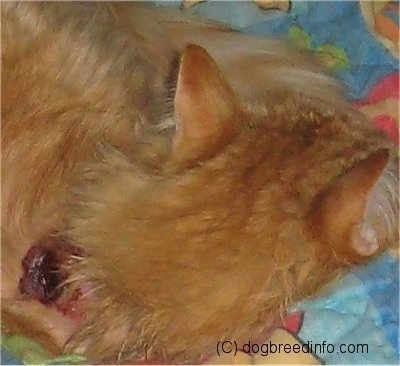
This cat had somehow gotten a scrape on the back of his neck. It almost looked like he was grabbed by another animal, possibly a fox. The hair was pulled out and there were a few scratches on his bald neck. This normally would have healed up fine, however, it was winter and temperatures dropped into the teens. From the wetness of the scrapes, in combination with the cat licking (what little he could reach), scratching the wound with his claws and the other cats and dogs licking the wound for the cat, the cat's neck became wet during a frigid night. This cat developed frostbite.
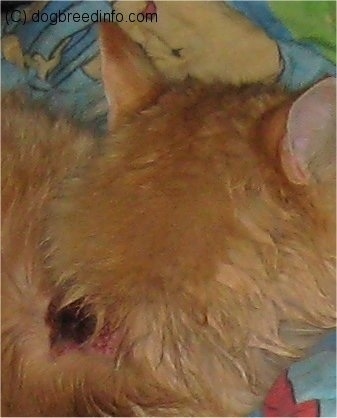
The skin was black and rubbery. From the cat scratching his own neck with his claws, he cut himself even more; with the cuts came more moisture, and more to freeze. The skin under the frostbite became infected and the patch of frostbite began to peel upward.
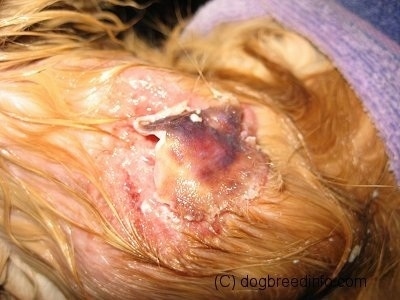
When the frostbite was discovered, the cat was brought inside a warm house, his wound soaked with Epsom salts to remove the black, rubbery skin and to treat the infection under it. This is the rubbery, frostbitten skin after it had been soaked for a good 15 minutes in very warm Epsom salts.
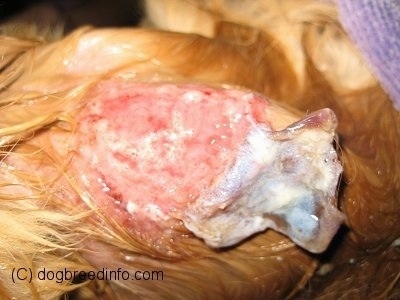
The frostbitten skin peeling off
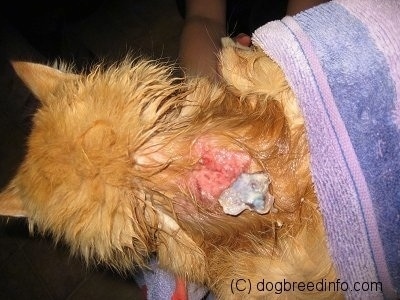
It has to be removed very carefully by soaking it and letting it peel off on its own.

Rubbery, frostbitten skin being removed
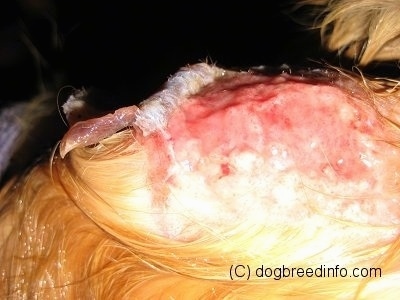

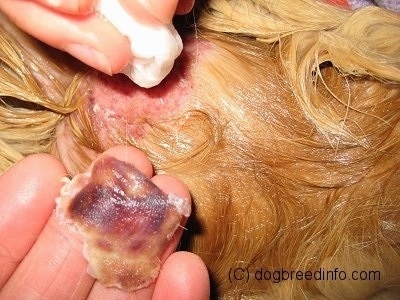
Dripping very warm Epsom salts into the wound and the frostbitten skin finally comes off.
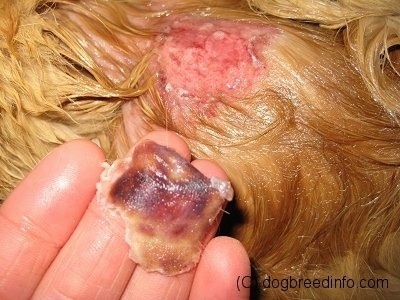
Look at the darkness of it. It was even darker before it was soaked in the Epsom salts.
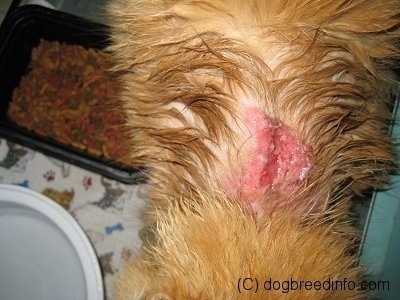
Now the skin underneath can be treated. Hopefully the hair will grow back. This cat will have to be kept out of the cold until it does.

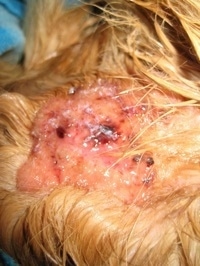
Day 2—You can see yellowish infection on the skin.
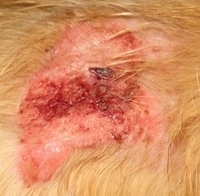
Day 3—Looking much better
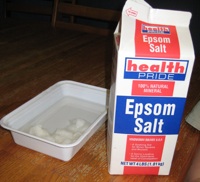
This cat was soaked in Epsom salts twice daily to suck out any infection that may have started and to promote healing. He was also given 62.5mg of Clavamox (antibiotic) twice daily as a precaution.
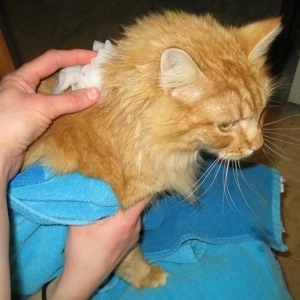
A paper towel was dipped in the warm salt water and placed on the cat’s back. After a minute or two, the paper towel was exchanged with a fresh, warm one, which was already in the water ready to go. When dealing with a cat, you do not have much time before the cat gets upset, so a speedy switch is beneficial.
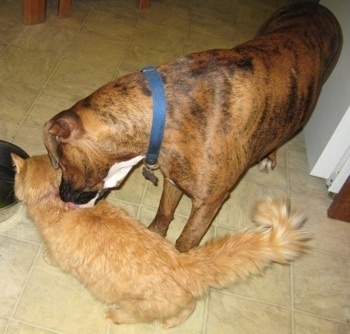
The dog was also encouraged to lick the cat's wound to promote a speedy recovery. Dog saliva has a natural healing agent in it. The built-in germicide found in the saliva of a dog amazingly heals wounds in record time. The cat rather enjoyed being licked by the dog.
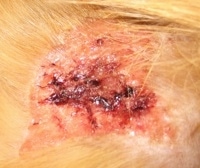
Day 4—At this point the cat was on antibiotics and there were no signs of infection, so no need to soak in Epsom salts.
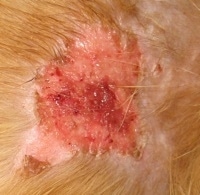
Day 5

Day 6
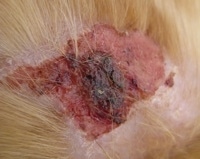
Day 7
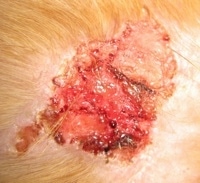
Day 8
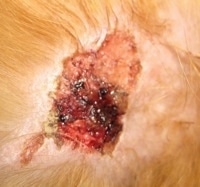
Day 9
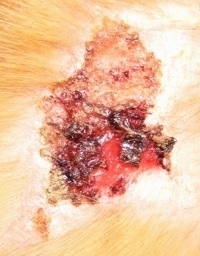
Day 10
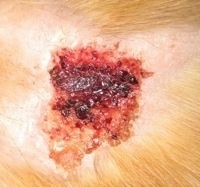
Day 11
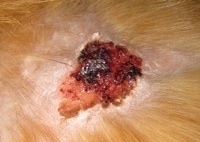
Day 12
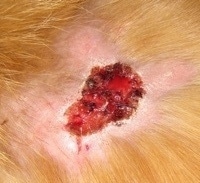
Day 13

Day 14—the cat has been scratching at it. It is most likely itching. He cannot reach it to lick it, and we cannot stick a cone on this head, because the wound is right at the base of the neck where the cone would rest. Overall it is healing up and there is no infection.
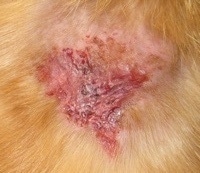
Day 15

Day 16
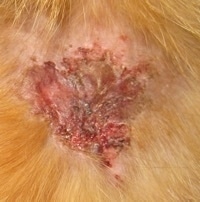
Day 17

Day 18—Notice the hair
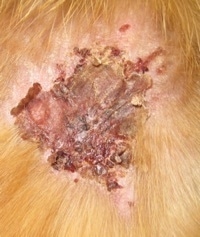
Day 19

Day 20
Written by Sharon Rose© Dog Breed Info Center® All Rights Reserved
































